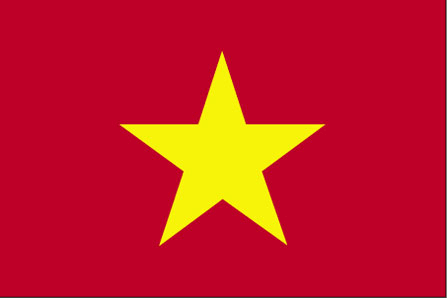To help inspire or plan your trip to Vietnam, some of its major attractions
for travellers are shown below, including some of the best natural, historical, cultural and adventure sites in the country.
These include all of UNESCO World Heritage Sites for Vietnam which represent the best
of the world's cultural and natural heritage.
Click on the icons below to focus on specific types of features
(click again to return to all).
|
|
|
|
|
|
|
|
|
|
|
|
 |
|---|---|---|---|---|---|---|---|---|---|---|---|
| Natural | History | Wildlife | Trekking | Cities | Religious Monument | Boat Journey | Rail Journey | Diving | Cultural | Adrenaline | UNESCO WHS |
Natural attractions in Vietnam
| Halong Bay | |
|---|---|
Halong Bay, whose name means "descending dragon", is a stunning site, where 3,000 limestone karst islands and peaks rise out of the emerald green waters of the bay. The best way to appreciate this area is on a slow junk boat ride through the bay, stopping off to explore limestone caves filled with stalactites and stalagmites, encounter floating fishing villages, enjoy secluded beaches or just swimming in the bay itself. UNESCO World Heritage Site: Ha Long Bay | |
| Sapa | |
|---|---|
Sapa is a hilltown northwest of Hanoi founded by the French as a retreat from the heat and humidity of the plains. Located at 1000 metres in the mountainous terrain of the Tonkinese Alps, it's an area of stunning natural beauty and perfect for exploring on foot or motorbike. Local villages inhabited by Vietnamese and minority tribes such as the Black Hmong, Tay and Red Dzao ensure some fascinating cultural interactions. It's a perfect region for trekking, either through the hills and villages or, for the more ambitious, to scale Mount Fansipan, at 3143 metres the highest peak on the Indochina peninsula. | |
| Mau Chau | |
|---|---|
Mau Chau is a village in the Hoa Binh province 135 kilometres from Hanoi. Located within a verdant valley, the area has stunning scenery and is an excellent spot for trekking. The region is home to Thai minority tribes such as the Hmong and home stays in the village will allow you to appreciate the customs and culture of these peoples. | |
| Danang | |
|---|---|
The city of Danang was once the centre of the Kingdom of Champa between the 4th and 13th centuries. Today the Cham Museum in Danang allows you to see some amazing Cham sculptures. The landscape around Danang is extraordinary, including the limestone peaks of the Marble Mountains, once used by both the Champas and in ore recent times as a haven for the Viet Cong and containing many Buddhist shrines. You can also visit the famous China Beach nearby. The road north to Hue also offers spectacular scenery, especially over the Hai Van pass, known as the Pass of the Ocean Clouds. | |
| Nha Trang | |
|---|---|
The city of Nha Trang is Vietnam's premier beach resort. The 4km stretch of white sands spans the entire length of the city with the warm, blue waters of the South China Sea on the shore. Boat trips take you to nearby islands, with opportunities for snorkelling and scuba diving, and allow you to appreciate the rugged coastlines around the city. Nha Trang is also famous for its seafood, which can be sampled in numerous restaurants in the town. | |
| Phong Nha-Ke Bang National Park | |
|---|---|
Phong Nha-Ke Bang National Park in Quang Binh Province comprises a very complex karst landscape, the oldest in Asia. It contains 65 kilometres of caves and underground rivers - Phong Nha Cave is almost 45 kilometres long and tour boats can travel over 1500 metres into the cave. On the surface the park is mostly covered by tropical forest and over 500 vertebrate species have been identified, including ten species of primates. UNESCO World Heritage Site: Phong Nha-Ke Bang National Park | |
| Mekong Delta | |
|---|---|
The Mekong River originates in the Tibetan Plateau and flows through China, Burma, Laos and Cambodia before reaching Vietnam and splitting into many waterways and channels to form the Mekong Delta. The Delta, home to about 20 million people, is one of the most fertile areas on earth, known as Vietnam's rice bowl and where many of its tropical fruits are grown. The region is best explored on boat and travelling along the canals, rivers and backwaters allows you to appreciate the beauty of the area and understand the lives of the local people. You will pass rice fields, villages of stilted houses, local markets (the floating market at Cai Be is famous) and see the cottage industries of the villagers. | |



